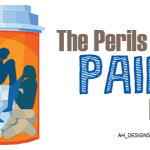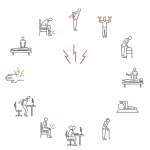(Reuters Health)—More than two-thirds of surgery patients in a recent study had prescription opioids left over after they recovered from their operations, and the vast majority failed to safely store or dispose of the often misused and abused pills, researchers say.
“Unused opioids that have been prescribed for pain after surgery serve as an important reservoir for potential opioid misuse, and this very likely contributes to the ongoing opioid crisis,” said Dr. Mark Bicket, a professor at Johns Hopkins University School of Medicine in Baltimore who led the research.
The findings highlight the need for surgeons to personalize pain management to avoid overprescribing and reduce the risks that arise when addictive pills are left in unlocked medicine cabinets and kitchen cupboards, said Bicket, an anesthesiologist and pain specialist.
“This is a kind of call to action partly to inform surgeons of a problem we need to address,” he said in a phone interview. “We need better ways to identify the needs for pain medication for patients after surgery, and right now we don’t have the tools.”
“Some surgeons are using a kind of one-size-fits-all approach to how they prescribe,” he said.
In six earlier studies, 67 percent to 92 percent of patients who were prescribed opioids following surgery reported winding up with leftover pills, Bicket and colleagues report August 2nd in JAMA Surgery.
Five studies found that only one in four patients reported storing opioids in a locked location.
Public health experts worry that cast-off pills can make their way into the wrong hands, particularly in light of a 2015 survey by the U.S. Centers for Disease Control and Prevention (CDC) showing that 17 percent of youth took prescription drugs without a doctor’s order.
Bicket and his team examined more than 2,400 prior studies but found only six that met their criteria for reporting on unused opioid medication. The six studies included 810 patients who received at least one opioid prescription following surgery, including orthopedic, obstetric and dental procedures.
Surgeons have no guidelines for how much pain medication to dispense to patients when they leave the hospital, and there is no data or research to draw on for direction, Bicket said.
The CDC last year released guidelines urging primary care physicians to dramatically curtail prescribing opioids for chronic pain. The guidelines, however, fail to address pain in the period immediately after surgery.
Every day, more than 1,000 Americans are treated in emergency rooms for opioid misuse, and 91 die from opioid overdoses, according to the CDC.


